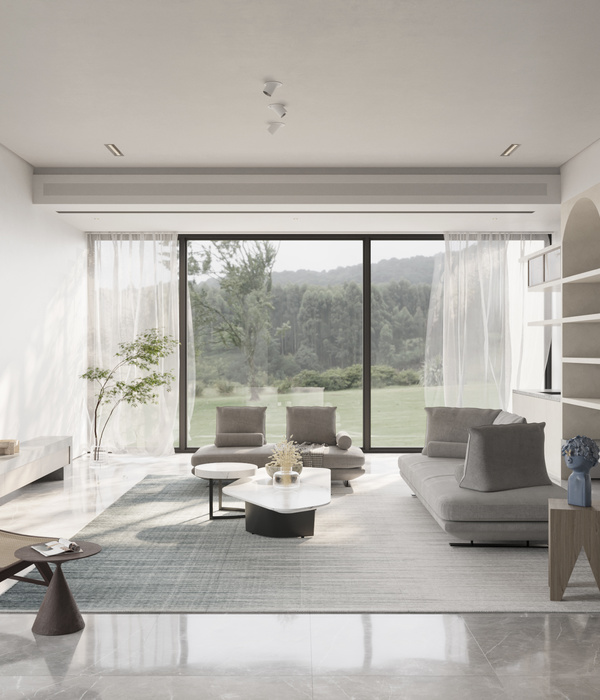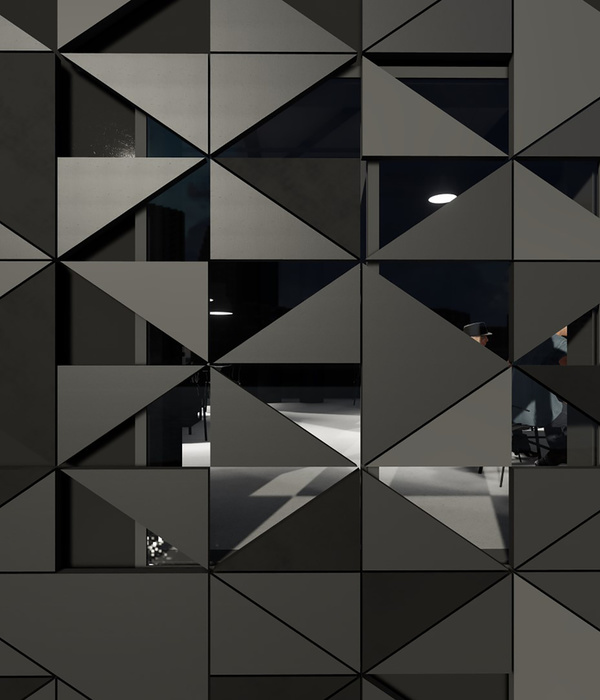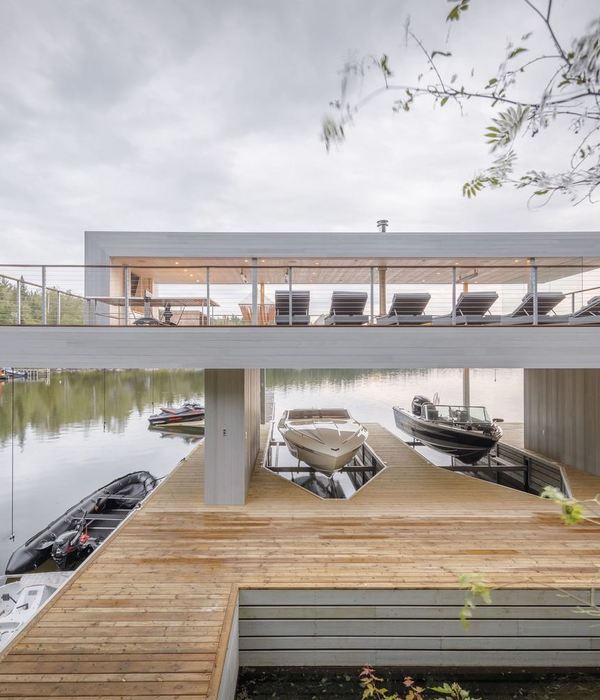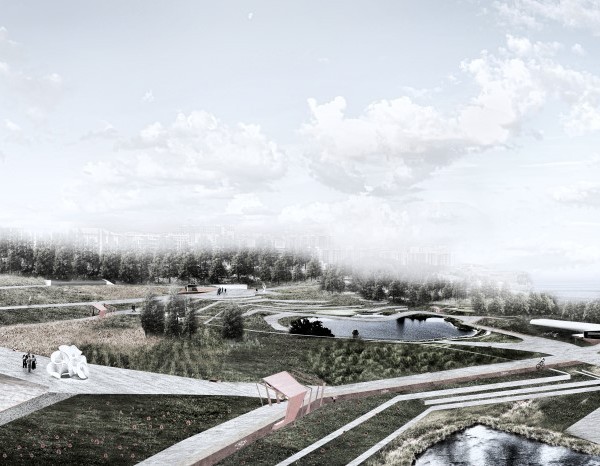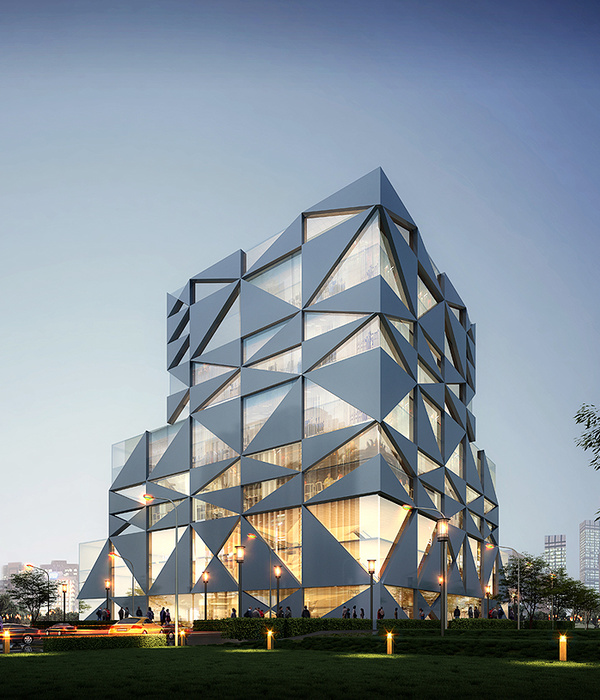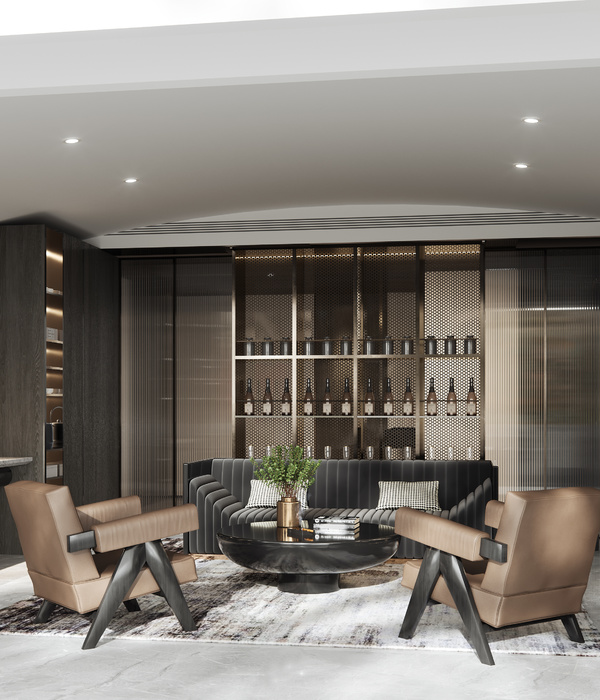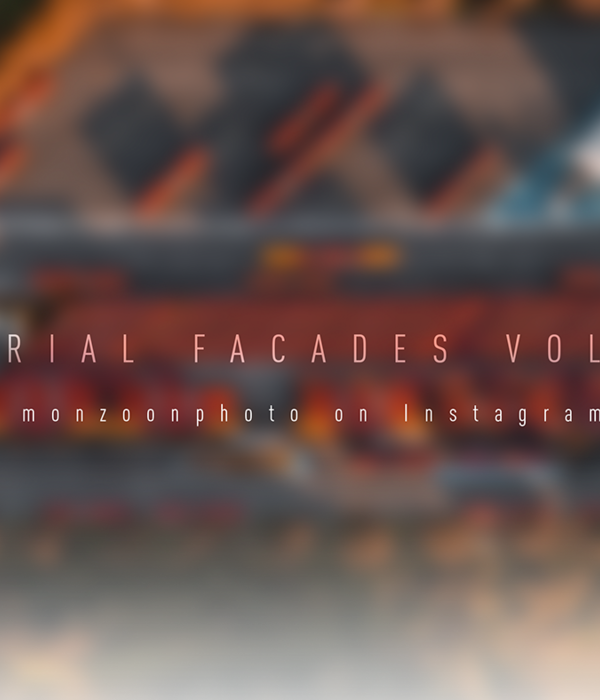这座住宅位于爱媛县乡村一块已开发的田地上。地块四周是存在已久的狭长而扭曲的道路,土地呈变形的旗杆形状。因此,建筑被角度各异的房产边界和建筑物所包围,无论站在场地的哪个位置,都会感到与邻近土地之间的微妙关系。该项目试图通过在轮廓扭曲的旗杆形地块上调整建筑与地块边界之间的距离,与外部邻近地块建立一种新的关系。
▼周围场地,surroundings ©1-1 Architects
The house is located on one of the plots of a large developed field located in the Japanese countryside. The site was surrounded by long, narrow, distorted roads that had existed for a long time, and the land had a deformed flagpole shape. As a result, the site was surrounded by variously angled property boundaries and buildings, and no matter where one stood on the site, one felt a tenuous relationship with the neighboring land. This project attempted to create a new relationship with the outside, including the neighboring land, by designing the distance between the building and the site boundary on a deformed flagpole lot with distorted contours.
▼场地鸟瞰,bird view of the building ©1-1 Architects
住户可以坐在光线柔和的小空间里,被高处邻近地块的挡土墙环绕,也可以在开阔地上用餐,远处是低处邻近地块的围墙。通过干预因土地调整而产生的不同的、分散的特征与邻近地块的扭曲边界之间的关系,建筑师认为该地块应该适应所有这些特征,并以同样的方式进行建造,使地块也成为居民生活的一部分。
The residents may sit in a small place with soft light, with the retaining wall of a high neighboring lot looming right next to them or eat in an open area with the fence of a low neighboring lot visible in the distance. By designing the relationship between the disparate and diffuse features created by the land readjustment and the distorted boundaries of the neighboring lots, we thought it would be appropriate for this site to affirm all of them and to build in such a way that they become a part of the residents’ lives.
▼场地周边建筑,surroundings ©1-1 Architects
▼旁边是高处邻近地块的挡土墙, with the retaining wall of a high neighboring lot ©1-1 Architects
▼在开阔地上用餐,eat in an open area ©1-1 Architects
具体的做法是在旗杆形状的场地的“旗帜”和“旗杆”部分,放置一个 宽1.8 米的细长体块。这样就在不规则的场地中创造了一个具有强轴线的内部空间,所有空间的东西两侧都有距离较近的外墙面。在调整与周边地块关系的同时,将通向室外的开口和从轴线略微凸出的地方作为聚集场所。居民在日常生活中会沿着南北轴线来回走动。邻近的土地在日常生活中时隐时现,随着与边界的距离,高差而发生动态变化。剖面图的设计目的是与邻近土地建立一种三维关系,同时在狭长的单一空间中以跃层的形式分布每个空间,保持一种家庭间的适度距离感。
▼剖面,section ©1-1 Architects
Specifically, a 1.8m wide elongated volume is placed to penetrate the flag and pole portions of the deformed flagpole site. By doing so, an interior space with a strong axis is created in the deformed site, and all the spaces can have exterior wall surfaces with a close distance on both east and west sides. While adjusting the relationship with the neighboring land, the openings that lead to the outside and the places that bulge out slightly from the axis that serve as gathering places are placed there. The residents will move back and forth along the long north-south axis as they go about their daily lives. The neighboring land, which is visible and hidden successively in daily life, changes dynamically depending on the distance from the deformed boundary, including the difference in elevation. The sectional plan was designed to create a three-dimensional relationship with the neighboring land while maintaining a moderate sense of distance from the family by scattering each space in the form of skipped floors in the long, narrow one-room space.
▼一层空间,ground floor living room ©1-1 Architects
▼一层餐厅,dining area on the ground floor ©1-1 Architects
▼一层空间,ground floor space ©1-1 Architects
▼楼梯, staircase ©1-1 Architects
▼二层空间,first floor space ©1-1 Architects
▼从二层俯瞰一层,looking into the ground floor from the first floor ©1-1 Architects
▼阁楼,loft ©1-1 Architects
▼夜景,night view ©1-1 Architects
▼场地平面,site plan ©1-1 Architects
▼建筑一层平面,ground floor plan ©1-1 Architects
▼建筑二层及阁楼平面,first floor plan/ loft plan ©1-1 Architects
Tiltle :House KJ Location: Ehime, Japan Main use: House Structure: Wooden Site area: 252.50m2 Building area: 62.53m2 Total floor area: 100.90m2 Design period:June 2020-April 2021 Construction period:May 2021-April 2022 Design: 1-1 Architects(Yuki Kamiya) Structure: Komatsu Structural Design Construction: KAWASHTA Construction Co., Ltd.
{{item.text_origin}}

